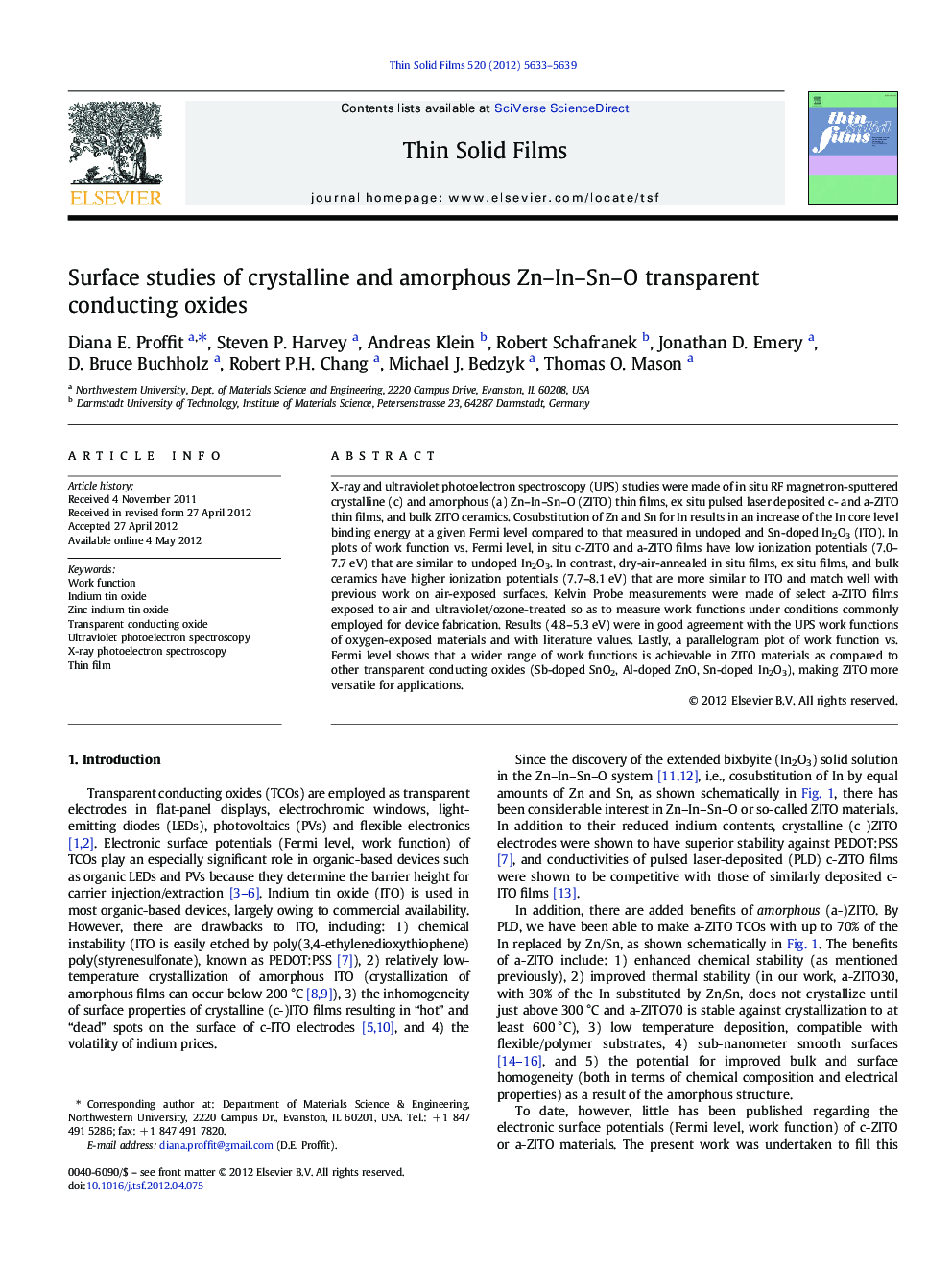| Article ID | Journal | Published Year | Pages | File Type |
|---|---|---|---|---|
| 1667418 | Thin Solid Films | 2012 | 7 Pages |
X-ray and ultraviolet photoelectron spectroscopy (UPS) studies were made of in situ RF magnetron-sputtered crystalline (c) and amorphous (a) Zn–In–Sn–O (ZITO) thin films, ex situ pulsed laser deposited c- and a-ZITO thin films, and bulk ZITO ceramics. Cosubstitution of Zn and Sn for In results in an increase of the In core level binding energy at a given Fermi level compared to that measured in undoped and Sn-doped In2O3 (ITO). In plots of work function vs. Fermi level, in situ c-ZITO and a-ZITO films have low ionization potentials (7.0–7.7 eV) that are similar to undoped In2O3. In contrast, dry-air-annealed in situ films, ex situ films, and bulk ceramics have higher ionization potentials (7.7–8.1 eV) that are more similar to ITO and match well with previous work on air-exposed surfaces. Kelvin Probe measurements were made of select a-ZITO films exposed to air and ultraviolet/ozone-treated so as to measure work functions under conditions commonly employed for device fabrication. Results (4.8–5.3 eV) were in good agreement with the UPS work functions of oxygen-exposed materials and with literature values. Lastly, a parallelogram plot of work function vs. Fermi level shows that a wider range of work functions is achievable in ZITO materials as compared to other transparent conducting oxides (Sb-doped SnO2, Al-doped ZnO, Sn-doped In2O3), making ZITO more versatile for applications.
► Crystalline and amorphous Zn–In–Sn–O (ZITO) measured by photoelectron spectroscopy. ► In situ ZITO films have low ionization potentials similar to undoped In2O3. ► Ex situ films have high ionization potentials, like ITO and ozone-exposed surfaces. ► Work function of ZITO varies strongly with deposition and processing conditions. ► The wide range of work functions enables multiple applications of ZITO.
